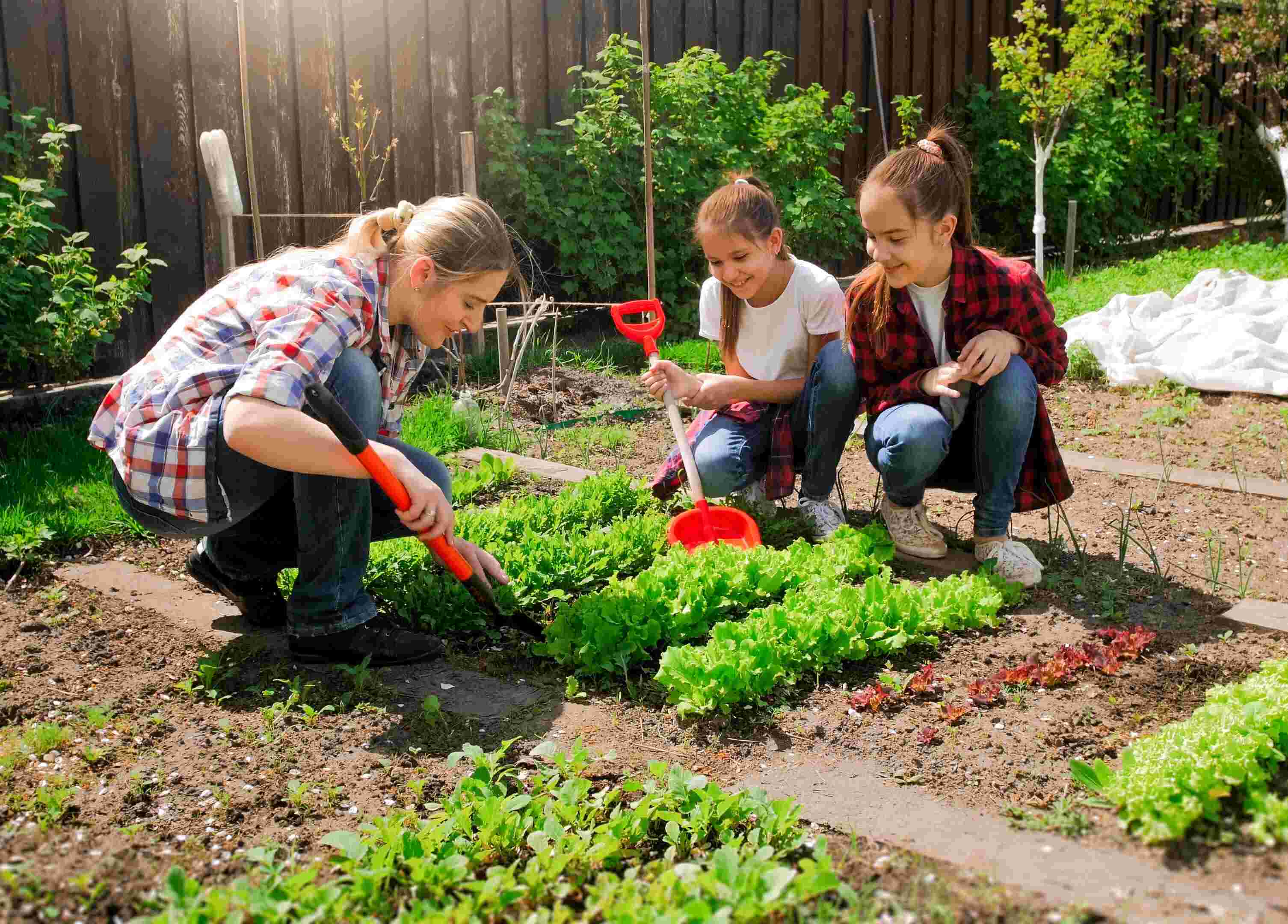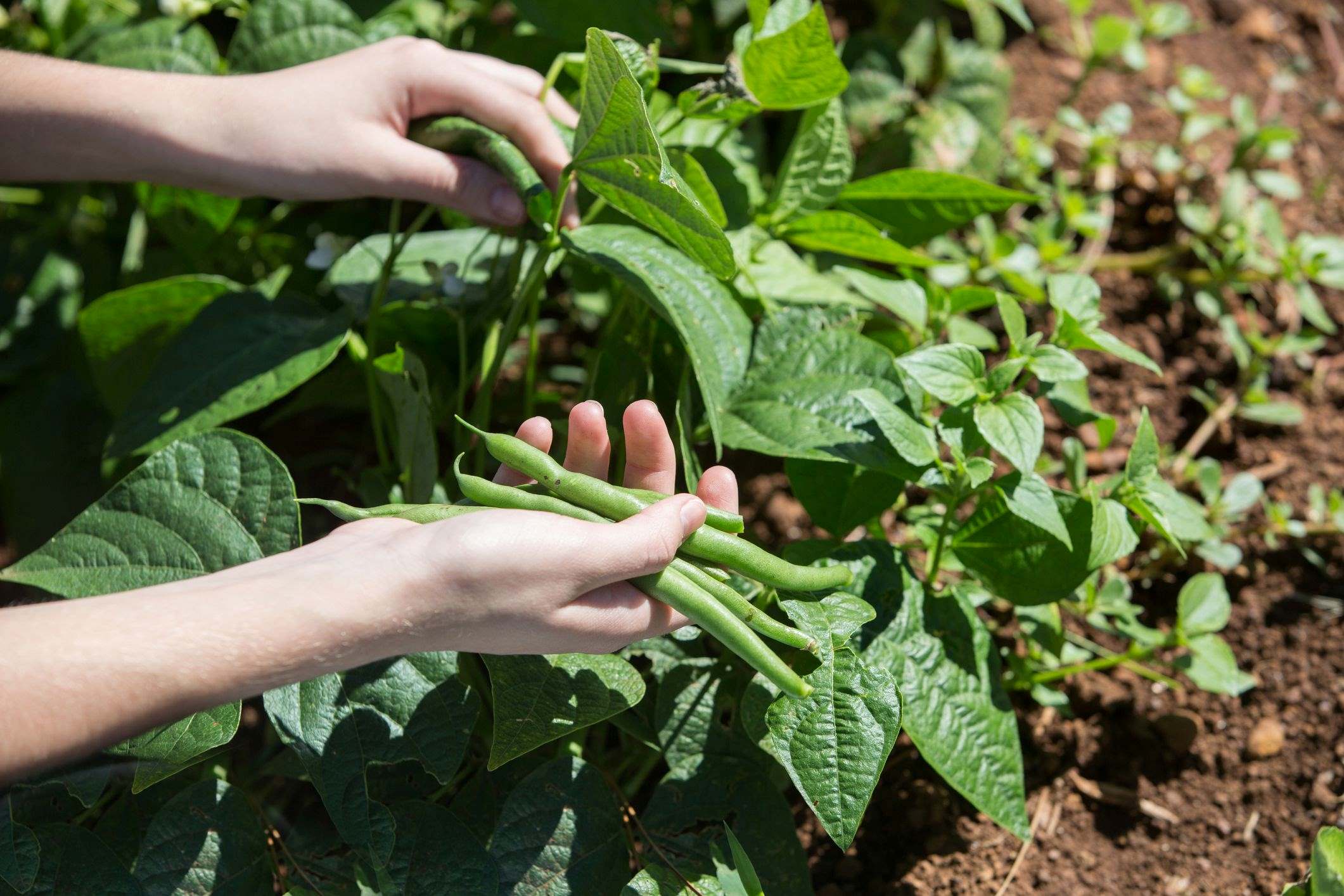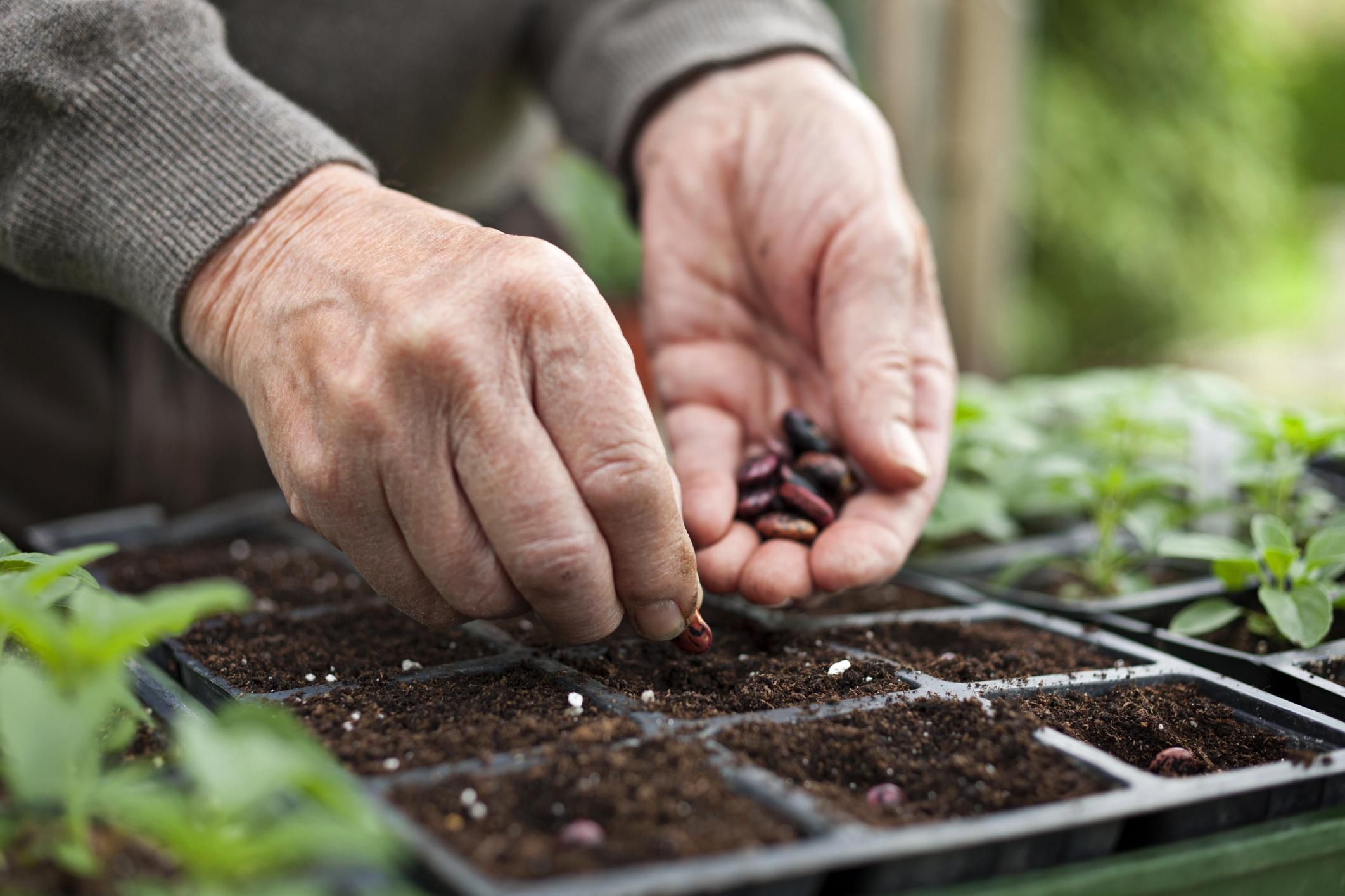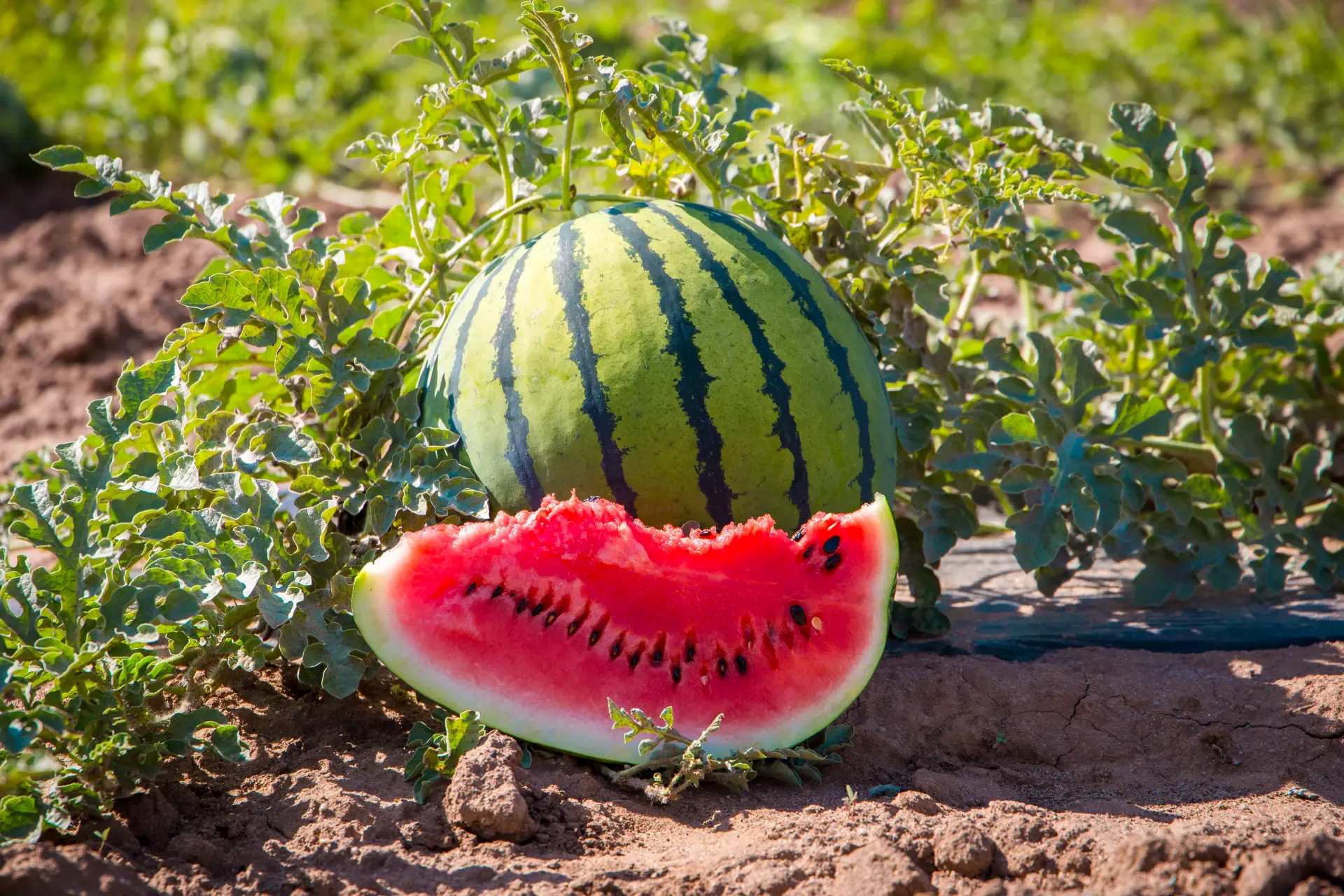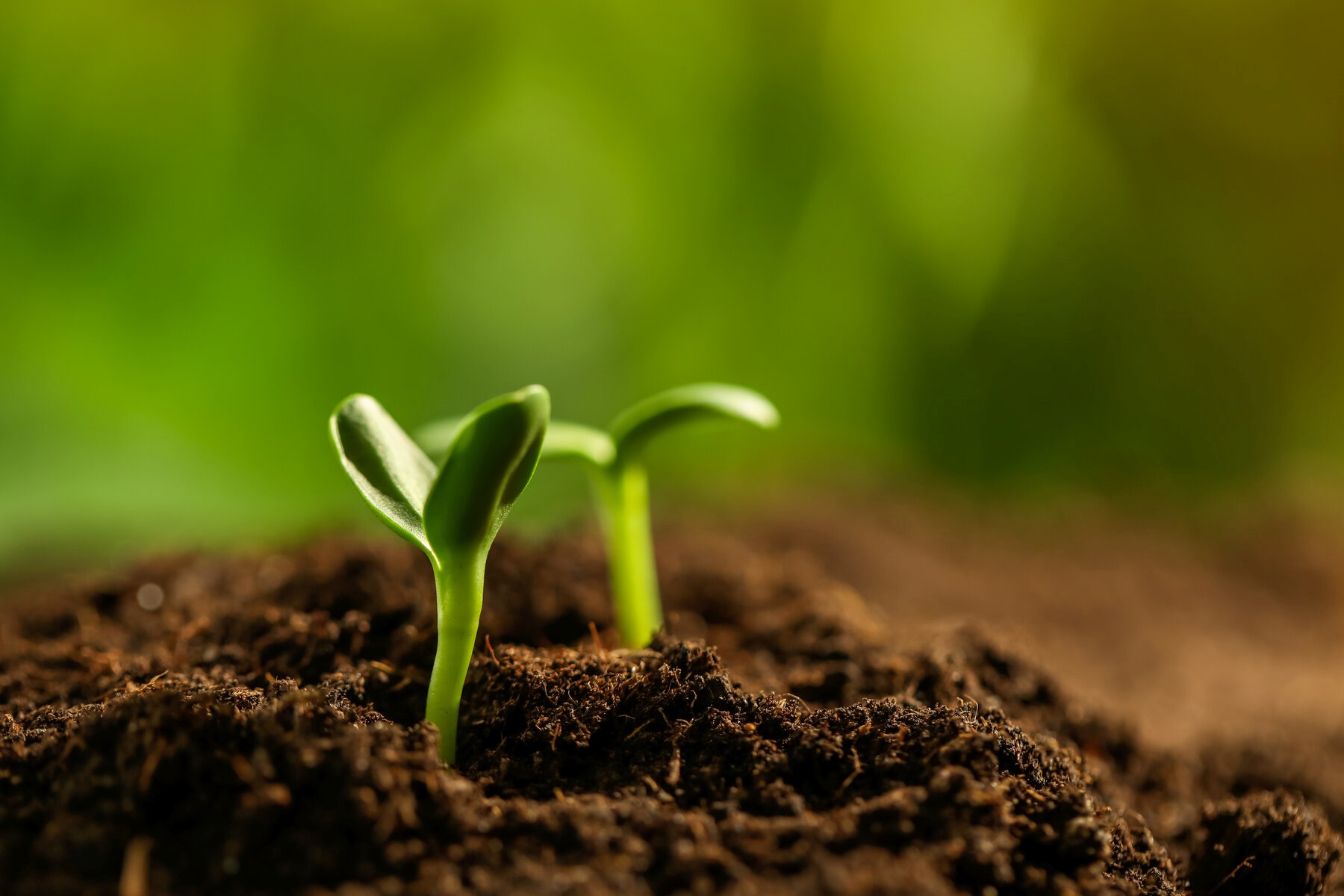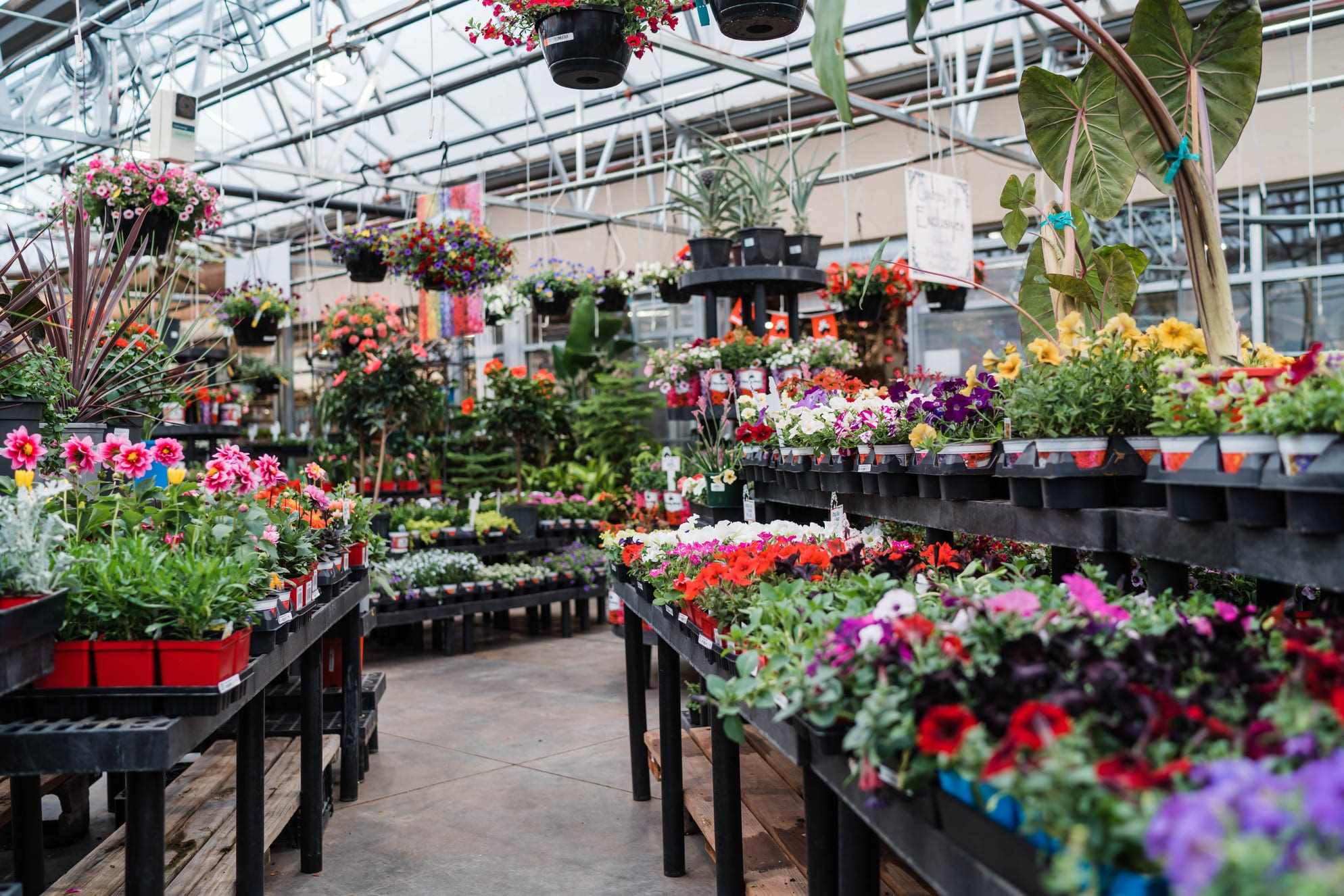Home>Gardening Techniques>Seasonal Gardening>When To Start Planting Spring Vegetables
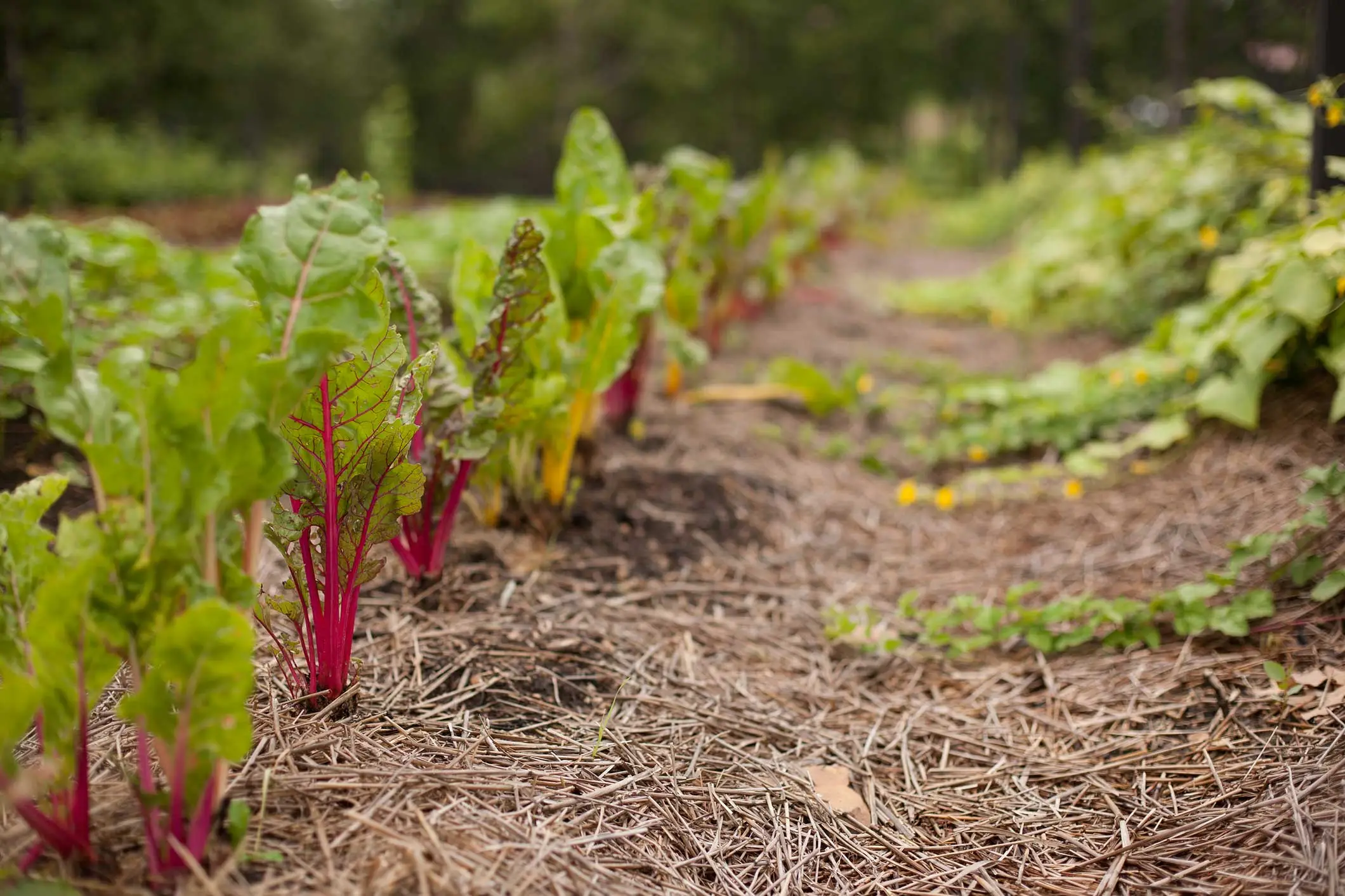

Seasonal Gardening
When To Start Planting Spring Vegetables
Modified: January 22, 2024
Discover the perfect timing for seasonal gardening and learn when to start planting spring vegetables. Enhance your gardening skills with expert advice and tips.
(Many of the links in this article redirect to a specific reviewed product. Your purchase of these products through affiliate links helps to generate commission for Chicagolandgardening.com, at no extra cost. Learn more)
Table of Contents
Introduction
Spring is an exciting time for gardeners, as it marks the beginning of a new gardening season full of possibilities. Whether you are an experienced gardener or just starting out, planting spring vegetables is a rewarding and satisfying endeavor. Not only do spring vegetables provide a fresh and nutritious addition to your meals, but they also offer the opportunity to connect with nature and enjoy the beauty of your own backyard.
However, knowing the right time to start planting spring vegetables can be a crucial factor in their success. Various factors need to be considered, such as the average last frost date, temperature and soil conditions, and specific recommendations for different types of vegetables. By understanding these factors and planning accordingly, you can increase the chances of a bountiful harvest and a thriving garden.
In this article, we will explore the key considerations when it comes to planting spring vegetables and provide recommendations for popular varieties. Whether you have a small plot of land, a raised bed, or even just a few pots on your balcony, you can get started on your spring vegetable garden with confidence.
Factors to Consider
Before you start planting your spring vegetables, there are a few important factors to consider. These factors will help you determine the optimal time to begin your planting and ensure the best chances for a successful harvest.
Average Last Frost Date: One of the most critical factors to consider is the average last frost date in your region. Frost can damage or kill tender vegetable plants, so it’s important to wait until after the danger of frost has passed. You can find this information by consulting a local gardening resource or contacting your local agricultural extension office.
Temperature and Soil Conditions: Another crucial factor to consider is the temperature and soil conditions. Most spring vegetables thrive in cool, moist soil with temperatures ranging between 50°F and 75°F (10°C to 24°C). Planting too early when the soil is still cold and wet can lead to stunted growth and poor development. It’s important to wait until the soil has warmed up and is workable before starting your planting.
Sunlight Requirements: Different vegetables have varying sunlight requirements. Some require full sun, while others can tolerate partial shade. Take note of the sunlight patterns in your gardening area and select vegetables accordingly. Be sure to consider any trees or structures that may create shade and plan accordingly to give your plants the best chance for success.
Growing Space: Assess the available growing space in your garden or containers. Consider the size and spread of the plants when fully grown and allocate enough space for each vegetable to thrive. Proper spacing ensures good air circulation and reduces the risk of disease and pest problems.
Companion Planting: Companion planting is the practice of growing certain plants together to enhance their growth and repel pests. Consider incorporating companion plants that have beneficial relationships with your choice of spring vegetables. For example, planting marigolds alongside tomatoes can help deter pests and improve overall plant health.
By carefully considering these factors before planting, you will set the stage for healthy and productive spring vegetable growth. Now that we have explored the factors to consider, let’s dive into specific recommendations for popular spring vegetables.
Average Last Frost Date
The average last frost date is a key piece of information to determine the appropriate time to start planting your spring vegetables. The date varies depending on your geographical location, and it represents the end of the frosty period in your area.
Knowing the average last frost date helps you avoid planting your tender vegetables too early, as they are susceptible to frost damage. Wait until after this date to ensure a higher success rate for your crops.
To find out the average last frost date for your specific location, you can consult local gardening resources, agricultural extension offices, or online tools. These resources provide valuable information tailored to your region.
However, it’s important to note that the average last frost date is just a guideline. It does not guarantee that frost will not occur after this date. Weather patterns can vary from year to year, and unexpected late frosts can still pose a threat. Pay attention to weather forecasts and use protective measures such as row covers or cold frames if there is a risk of frost after the average last frost date.
By being aware of the average last frost date and understanding the risks associated with frost, you can plan your spring vegetable planting schedule accordingly and maximize your chances of a successful harvest.
Temperature and Soil Conditions
Temperature and soil conditions are crucial factors to consider when it comes to planting spring vegetables. These factors directly impact the growth and development of your plants and can determine the success or failure of your harvest.
Most spring vegetables prefer cool soil temperatures ranging between 50°F and 75°F (10°C to 24°C). Planting when the soil is too cold can lead to poor germination and slow growth. To ensure optimal soil temperature, it’s essential to wait until the soil has warmed up to the desired range.
In addition to temperature, soil conditions play a vital role in the health and productivity of your spring vegetables. Well-draining soil is essential to prevent waterlogging, as excessive moisture can lead to root rot and other issues. Work organic matter, such as compost or well-rotted manure, into the soil to improve its structure, drainage, and nutrient content.
Before planting, test your soil’s pH level to ensure it falls within the appropriate range for the specific vegetables you plan to grow. Most spring vegetables prefer a slightly acidic to neutral pH level. Adjust the pH if needed by adding lime to raise it or sulfur to lower it, following the recommendations from your soil test results.
Ensure that the soil is free from weeds and debris, as they can compete with your vegetables for nutrients and water. Clear the planting area thoroughly and maintain it throughout the growing season by regular weeding and mulching to suppress weed growth.
Furthermore, take into account the sunlight requirements of your chosen vegetables. Different vegetables have varying light needs, with some thriving in full sun while others can tolerate partial shade. Observe the sunlight patterns in your garden and select suitable vegetables accordingly.
By considering temperature and soil conditions, you are setting the stage for optimal growth and maximizing the chances of a productive spring vegetable garden. Taking the time to prepare your soil and ensure the right temperature will pay off with healthy, thriving plants and a bountiful harvest.
Planting Recommendations for Popular Spring Vegetables
Now that we have covered the key factors to consider when planting spring vegetables, let’s explore some specific recommendations for popular varieties. Each vegetable has its own planting guidelines, including when to sow seeds or transplant seedlings and the recommended spacing between plants.
Leafy Greens
Leafy greens such as lettuce, spinach, and kale are excellent choices for early spring planting. Direct sow seeds as soon as the soil can be worked, or start seeds indoors a few weeks earlier and transplant seedlings once they have developed a few leaves. Space leafy greens about 6 to 12 inches apart, depending on the variety.
Root Vegetables
Root vegetables like carrots, radishes, and beets can be sown directly into the soil as soon as it is workable. Thin seedlings to provide adequate spacing, usually around 2 to 4 inches apart for carrots and radishes, and 4 to 6 inches apart for beets.
Cruciferous Vegetables
Cruciferous vegetables, including broccoli, cauliflower, and cabbage, are best started indoors 4 to 6 weeks before the average last frost date. Transplant the sturdy seedlings into the garden when they are about 4 to 6 inches tall, spacing them according to the recommended guidelines for each vegetable.
Legumes
Legumes like snap peas, bush beans, and snow peas can be sown directly into the soil after the danger of frost has passed. Space them about 2 to 4 inches apart and provide supports for the climbing varieties as they grow.
Herbs
Herbs like parsley, basil, and dill can be started from seeds indoors and transplanted into the garden once the soil has warmed up. Ensure proper spacing between plants, usually around 8 to 12 inches apart, to allow for healthy growth.
It’s important to note that these recommendations serve as general guidelines, and specific varieties may have unique requirements. Consult seed packets or gardening references for more detailed instructions on planting depth, spacing, and any additional considerations for each vegetable.
By following these planting recommendations, you can ensure that your spring vegetable garden is off to a strong start. Remember to provide proper care, including regular watering, mulching, and fertilizing, to support their growth throughout the season.
Leafy Greens
Leafy greens are a popular choice for spring vegetable gardens, and for good reason. They are packed with nutrients, easy to grow, and provide a delicious addition to salads, stir-fries, and smoothies. Let’s explore some planting recommendations for leafy greens.
Lettuce: Lettuce is a cool-season crop that thrives in spring temperatures. Depending on the variety, lettuce can be divided into different categories – crisphead, butterhead, romaine, and loose-leaf lettuce. Sow lettuce seeds directly in the garden as soon as the soil can be worked. Space the seeds about 6 to 12 inches apart, depending on the variety. Keep the soil consistently moist to encourage rapid germination and growth.
Spinach: Spinach is a nutrient-rich leafy green that can tolerate cooler soil temperatures. Sow spinach seeds directly in the garden as soon as the soil can be worked, or start seeds indoors and transplant the seedlings once they have a few true leaves. Space the plants about 4 to 6 inches apart to give them room to grow. Regularly harvest the outer leaves to encourage new growth and prevent bolting.
Kale: Kale is a cold-hardy leafy green that can withstand light frosts. Sow kale seeds directly in the garden as soon as the soil can be worked or start seeds indoors and transplant the seedlings once they are 3 to 4 inches tall. Space the plants about 12 to 18 inches apart to allow for ample growth. Harvest the outer leaves as needed, leaving the center leaves to continue growing.
Arugula: Arugula is a peppery and flavorful leafy green that is quick to grow. Sow arugula seeds directly in the garden after the danger of frost has passed. Space the seeds about 1 inch apart and thin the seedlings to 4 to 6 inches apart once they have grown a couple of inches. Harvest the leaves when they reach the desired size for a fresh and zesty addition to your meals.
Swiss Chard: Swiss chard is a versatile leafy green with vibrant stems and glossy leaves. Sow Swiss chard seeds directly in the garden once the soil has warmed up. Space the seeds about 4 to 6 inches apart and thin the seedlings to 12 to 18 inches apart. Harvest the outer leaves as they mature, allowing the inner leaves to continue growing for a continuous supply throughout the season.
Leafy greens prefer well-draining soil and regular watering to prevent them from drying out. Consider adding a layer of mulch around the plants to help retain moisture and suppress weeds. Monitor for common pests like aphids or caterpillars and take appropriate measures to control them if necessary.
By following these planting recommendations, you can enjoy a steady supply of fresh and nutritious leafy greens throughout the spring season. Experiment with different varieties and mix them together for a vibrant and diverse salad straight from your garden.
Root Vegetables
Root vegetables are a versatile and nutritious addition to any spring vegetable garden. They are known for their crisp texture, earthy flavors, and ability to store well. Here are some planting recommendations for common root vegetables:
Carrots: Carrots are a popular root vegetable that can be grown in a variety of shapes and colors. Sow carrot seeds directly into the garden once the soil can be worked. Create loose soil by removing rocks and debris, as carrots need space to develop straight and long roots. Space the seeds about 2 to 4 inches apart and thin the seedlings to 2 to 3 inches apart once they have grown a few inches tall. Harvest carrots when they have reached the desired size, usually around 60 to 80 days after sowing.
Radishes: Radishes are quick-growing root vegetables that add a crisp and peppery bite to salads and sandwiches. Sow radish seeds directly into the garden as soon as the soil can be worked. Space the seeds about 2 to 4 inches apart and thin the seedlings to 1 to 2 inches apart once they have grown a few inches tall. Radishes can be harvested when they have reached maturity, which is usually around 25 to 30 days after sowing.
Beets: Beets are an earthy and nutritious root vegetable that can be enjoyed both for their roots and their edible greens. Sow beet seeds directly into the garden once the soil has warmed up. Create loose soil to accommodate the growth of the beet roots. Space the seeds about 4 to 6 inches apart and thin the seedlings to 3 to 4 inches apart once they have grown a few inches tall. Beets can be harvested when they have reached the desired size, typically between 50 and 70 days after sowing.
Turnips: Turnips are a versatile root vegetable that can be enjoyed both raw and cooked. Sow turnip seeds directly into the garden once the soil has warmed up. Space the seeds about 3 to 4 inches apart and thin the seedlings to 4 to 6 inches apart once they have grown a few inches tall. Turnips can be harvested when they have reached maturity, which is usually around 40 to 60 days after sowing.
Ensure that the soil is well-drained and free from any rocks or compacted areas that may hinder root development. Regularly water the plants to ensure consistent moisture in the soil. Consider adding a layer of mulch around the roots to help retain moisture and suppress weed growth.
By following these planting recommendations, you can enjoy a bounty of flavorful and nutritious root vegetables from your spring garden. Explore different varieties and colors to add vibrant and delicious options to your meals.
Cruciferous Vegetables
Cruciferous vegetables are a family of nutrient-rich plants that are highly sought after for their health benefits. These vegetables, including broccoli, cauliflower, and cabbage, are known for their delicious flavors and versatility in the kitchen. Here are some planting recommendations for cruciferous vegetables:
Broccoli: Broccoli is a cool-season vegetable that thrives in spring and fall. Start broccoli seeds indoors about 6 to 8 weeks before the average last frost date. Transplant the seedlings into the garden once they have developed a few true leaves and the soil has warmed up. Space the plants about 18 to 24 inches apart to provide enough room for them to grow. Harvest the central heads when they are firm and compact, but before they start to flower. Side shoots will continue to develop after the main head is harvested.
Cauliflower: Cauliflower is another cool-season vegetable that requires similar growing conditions to broccoli. Start cauliflower seeds indoors about 6 to 8 weeks before the average last frost date. Transplant the seedlings into the garden once they have grown a few true leaves and the soil is workable. Space the plants about 18 to 24 inches apart to allow for adequate head development. Blanch the heads by tying the outer leaves together when they reach the size of a tennis ball to keep them white. Harvest the heads when they are firm and compact.
Cabbage: Cabbage is a leafy green vegetable that is versatile in the kitchen. Start cabbage seeds indoors 6 to 8 weeks before the average last frost date. Transplant the seedlings into the garden once they have developed a few true leaves and the soil has warmed up. Space the plants about 12 to 18 inches apart to allow for proper growth. Harvest the heads when they are firm and solid by cutting them at the base. Some varieties may also produce side shoots after the main head is harvested.
Cruciferous vegetables prefer well-draining soil with a pH level between 6.0 and 7.5. Ensure that the plants receive a consistent water supply to prevent them from drying out. Applying a layer of organic mulch around the plants can help retain moisture in the soil and suppress weed growth. Keep an eye out for common pests such as cabbage worms or aphids and take appropriate measures to control them if necessary.
With these planting recommendations, you can enjoy a harvest of nutritious and flavorful cruciferous vegetables from your spring garden. Experiment with different varieties to add variety and color to your meals while reaping the numerous health benefits they offer.
Legumes
Legumes, such as snap peas, bush beans, and snow peas, are not only a delicious addition to meals but also play a vital role in enriching the soil through nitrogen fixation. These versatile plants are well-suited for spring planting, offering an abundance of tasty produce. Here are some planting recommendations for legumes:
Snap Peas: Snap peas are a favorite among gardeners for their crisp pods and sweet flavor. Sow snap pea seeds directly into the garden after the danger of frost has passed and the soil temperatures have warmed up. Space the seeds about 1 to 2 inches apart and provide them with a trellis or support to climb as they grow. Harvest snap peas when the pods are plump and the peas inside have started to fill out.
Bush Beans: Bush beans are a compact and easy-to-grow legume that delivers an abundant harvest. Sow bush bean seeds directly into the garden once the soil temperatures have warmed up. Space the seeds about 2 to 4 inches apart and provide them with proper support if needed. Harvest bush beans when the pods are firm and crisp, but before the beans inside become too large.
Snow Peas: Snow peas have edible flat pods that are tender and sweet. Sow snow pea seeds directly into the garden after the danger of frost has passed. Space the seeds about 2 to 4 inches apart and provide them with a trellis or support for climbing. Harvest snow peas when the pods are flat, before the peas inside fully develop.
Ensure that the soil is well-drained and enriched with organic matter to support the growth of legumes. Water the plants consistently, as legumes require even moisture for optimal growth. Applying a layer of mulch around the plants can help regulate soil temperature and moisture while suppressing weed growth.
Legumes have a unique ability to fix nitrogen from the atmosphere into the soil, benefiting neighboring plants and improving overall soil health. Consider rotating legumes with other crops each year to maintain a well-balanced garden ecosystem.
By following these planting recommendations, you can enjoy a rewarding harvest of crisp and flavorful legumes from your spring garden. Whether used in stir-fries, salads, or enjoyed on their own, legumes are a nutritious and versatile addition to your meals.
Herbs
Herbs are not only a delightful addition to any dish but also provide aromatic foliage and attract beneficial pollinators to your garden. They are easy to grow and can thrive in various conditions. Here are some planting recommendations for herbs in your spring garden:
Parsley: Parsley is an herb that adds freshness and flavor to a wide range of dishes. Sow parsley seeds indoors 8 to 10 weeks before the average last frost date. Transplant the seedlings into the garden once the soil has warmed up and space them about 8 to 12 inches apart. Parsley is a biennial plant, so it can be harvested continuously throughout the season, preferably by snipping the outer leaves.
Basil: Basil is a fragrant herb that is a staple in many kitchens. Start basil seeds indoors 6 to 8 weeks before the average last frost date or sow them directly into the garden once the soil is warm and all danger of frost has passed. Space the plants about 8 to 12 inches apart. Regularly harvest the leaves to encourage bushier growth and prevent flowering, as flowering can reduce the quality and flavor of the leaves.
Dill: Dill is an herb with feathery foliage and a distinct flavor that pairs well with fish, pickles, and salads. Sow dill seeds directly into the garden after the danger of frost has passed. Space the seeds about 12 to 18 inches apart. Harvest the leaves when they are fully grown but before the plant starts to flower, as the leaves lose their flavor once the plant bolts.
Chives: Chives are a versatile herb with onion-like flavor and vibrant green foliage. Plant chive divisions or start seeds indoors 6 to 8 weeks before the average last frost date. Transplant the seedlings or divisions into the garden once the soil has warmed up and space them about 6 to 8 inches apart. Harvest the leaves by cutting them at the base to encourage fresh growth throughout the season.
Herbs can be grown in dedicated herb gardens, mixed beds, or even in containers on a windowsill or balcony. They prefer well-drained soil and full sun, but some herbs like parsley and cilantro can tolerate partial shade. Keep the soil consistently moist but not waterlogged, and consider using organic mulch to retain moisture and suppress weed growth.
By following these planting recommendations, you can enjoy a fresh supply of flavorful herbs to enhance your culinary creations. Experiment with different varieties and combinations to add depth and aroma to your dishes, and don’t forget to share your herbal abundance with friends and neighbors!
Tips for Successful Spring Vegetable Planting
Planting a spring vegetable garden can be a rewarding and enjoyable experience. To ensure a successful harvest, here are some tips to keep in mind:
- Plan your garden: Take time to plan your garden layout and determine which vegetables you want to grow. Consider their sunlight requirements, spacing needs, and companion planting possibilities.
- Start seeds indoors: Some vegetables benefit from an early start indoors. Read seed packets or gardening references to determine which vegetables require early indoor sowing for a head start.
- Prepare the soil: Before planting, ensure that the soil is well-drained, rich in organic matter, and free from weeds and debris. Amend the soil with compost or well-rotted manure to improve its nutrient content and structure.
- Follow proper spacing: Give your plants enough space to grow and spread. Crowded plants can impede air circulation and increase the risk of disease. Refer to seed packets or gardening references for recommended spacing guidelines.
- Water consistently: Provide your spring vegetables with consistent moisture. Water deeply and regularly to keep the soil evenly moist. Avoid overwatering, as it can lead to root rot and other issues.
- Mulch the garden: Apply a layer of organic mulch, such as straw or wood chips, around your plants. Mulch helps retain soil moisture, suppress weeds, and regulate soil temperature.
- Monitor for pests and diseases: Regularly inspect your plants for signs of pests or diseases. Early detection can help prevent the spread of infestations and minimize crop damage. Use organic pest control methods when possible.
- Harvest regularly: Harvest your vegetables when they reach their peak maturity. Regular harvesting encourages continued production and prevents the plants from becoming overcrowded.
- Rotate crops: Practice crop rotation by changing the planting location of your vegetables each year. This helps prevent the buildup of diseases and pests in the soil and promotes overall plant health.
- Learn from experience: Keep a journal or garden diary to note down your planting dates, observations, and successes or challenges. This valuable information will help you make adjustments and improvements in future seasons.
Remember that gardening is a learning process, and each season presents new opportunities and challenges. Embrace the joy of growing your own food and be open to experimenting and adapting as you cultivate your spring vegetable garden.
Conclusion
As you embark on your spring vegetable gardening journey, it’s important to consider various factors such as the average last frost date, temperature and soil conditions, and specific planting recommendations for different vegetables. By understanding these factors and following the tips for successful spring vegetable planting, you can increase the likelihood of a thriving garden and a bountiful harvest.
Remember to plan your garden layout, provide proper spacing, and start seeds indoors when necessary. Prepare the soil by amending it with organic matter and ensure consistent moisture through regular watering. Monitor for pests and diseases, and harvest your vegetables at the peak of maturity.
Whether you choose to grow leafy greens, root vegetables, cruciferous vegetables, legumes, or herbs, each has its unique requirements and brings a variety of flavors and nutrients to your table. Cultivating your own spring vegetable garden provides not only fresh and delicious produce but also a fulfilling connection to nature and a sense of accomplishment.
Embrace the joy of gardening and be open to learning from each season’s successes and challenges. Experiment with different varieties, companion planting, and growing techniques to discover what works best for you and your garden. Enjoy the process of nurturing your plants and relish in the satisfaction of enjoying the fruits of your labor.
So, grab your gardening tools, get your hands in the soil, and watch as your spring vegetable garden comes to life. Happy planting and may your garden be filled with an abundance of vibrant and delicious vegetables!
